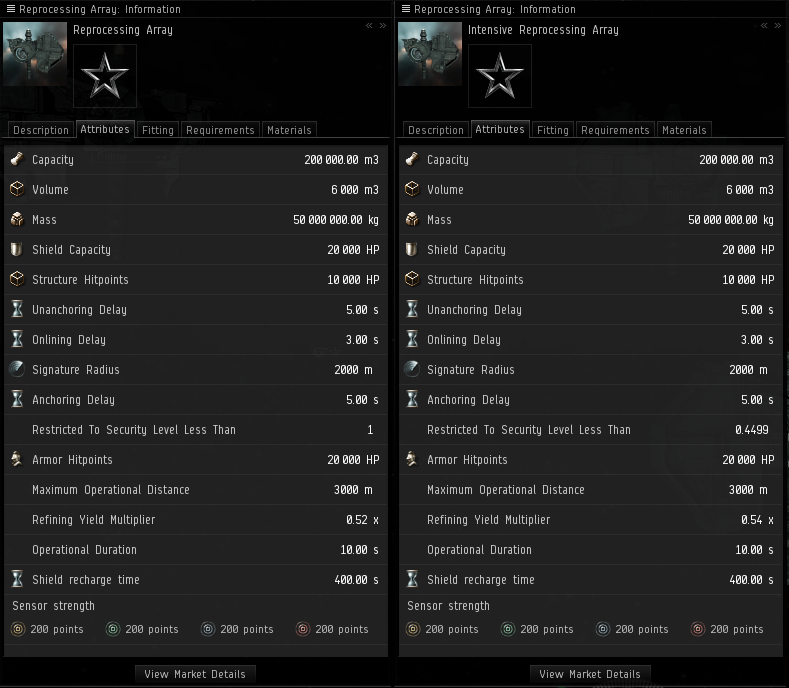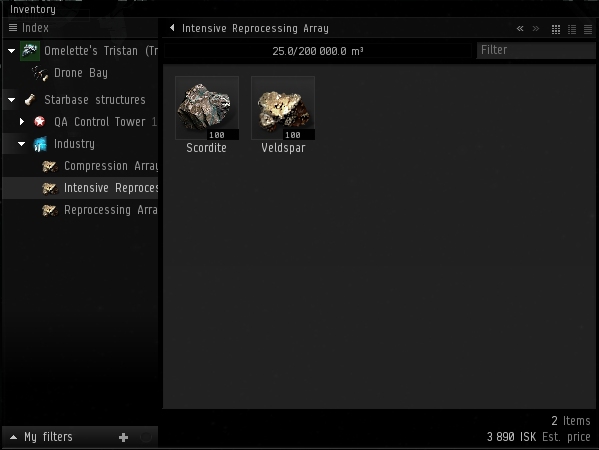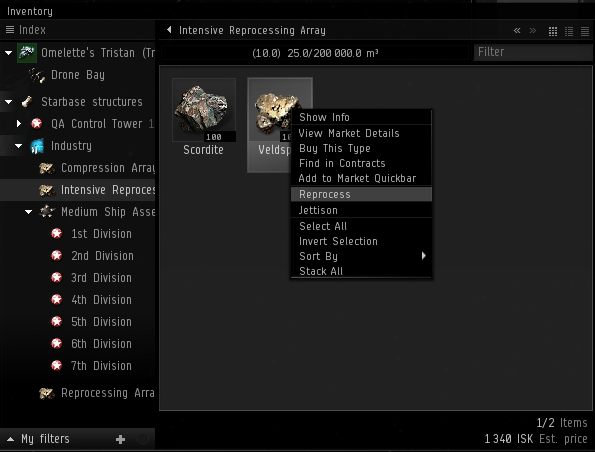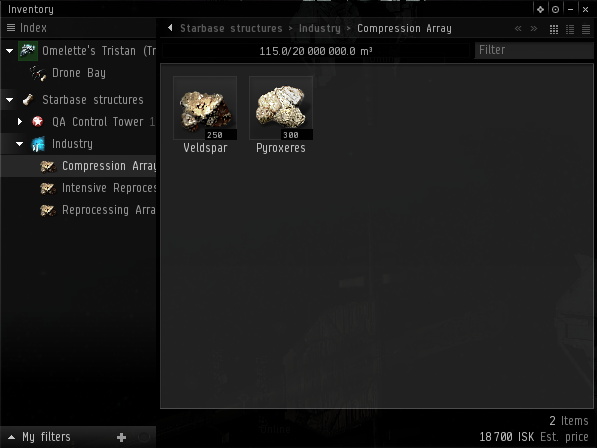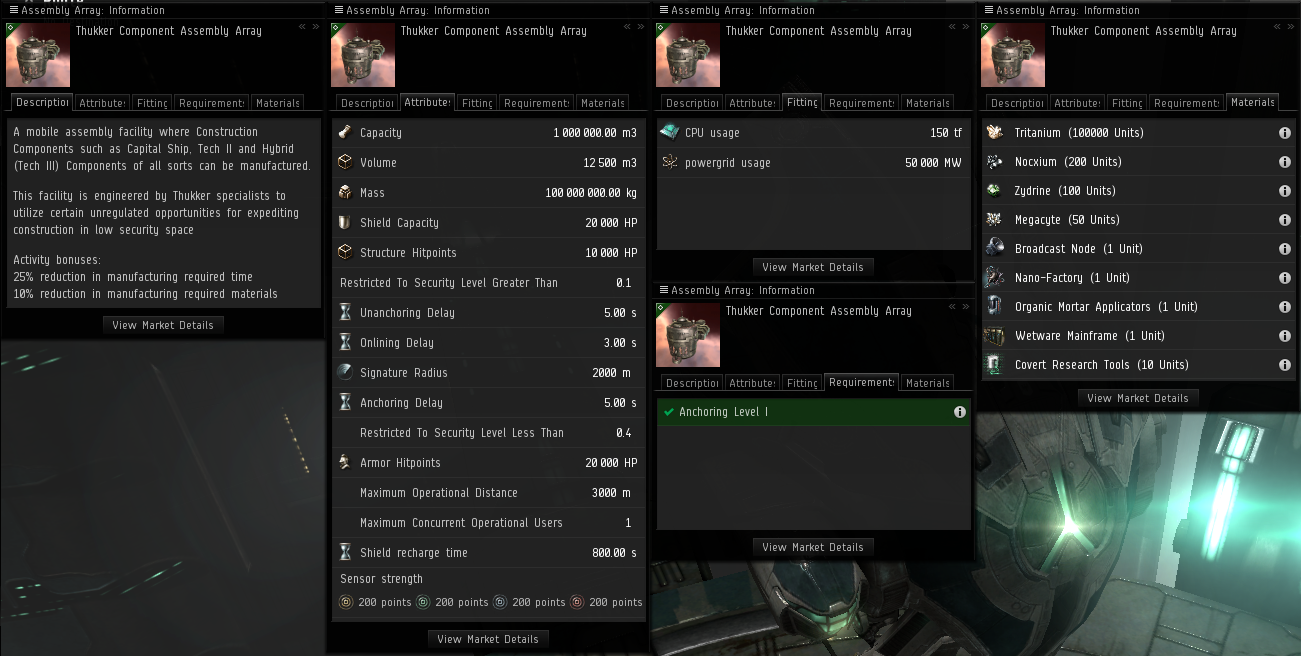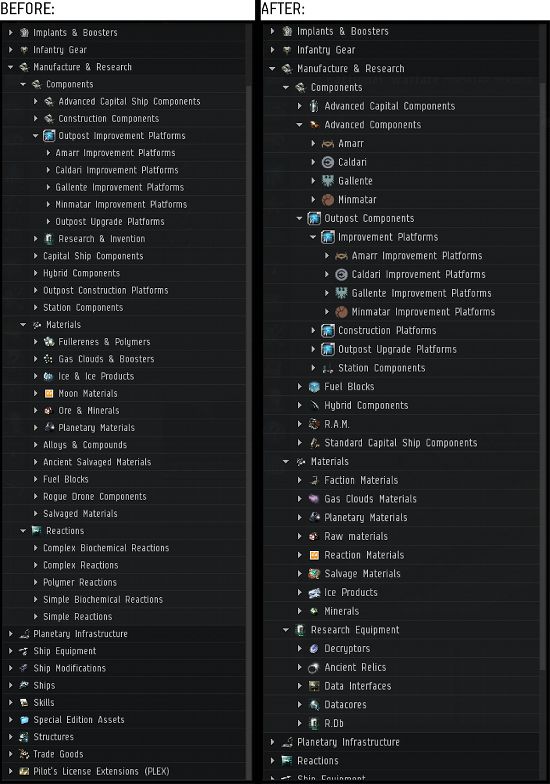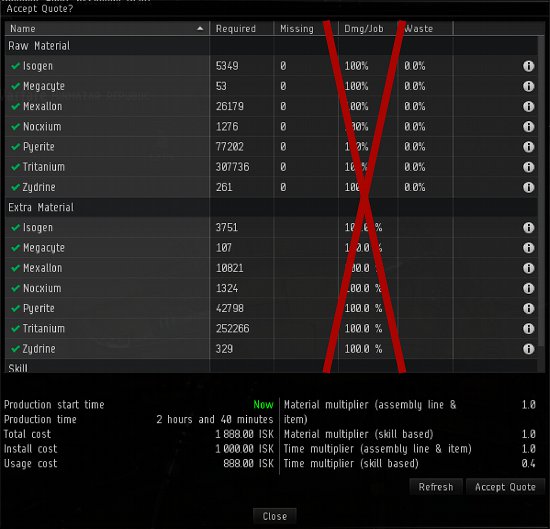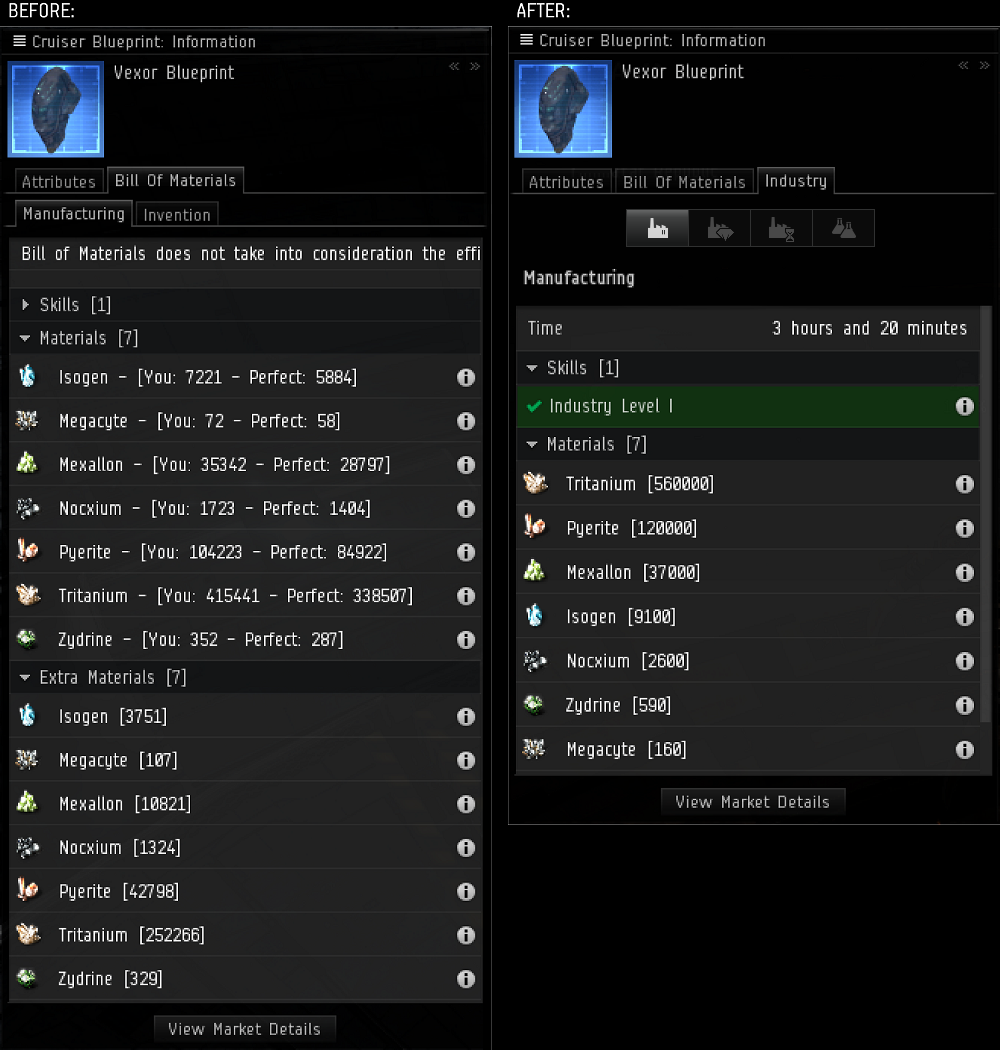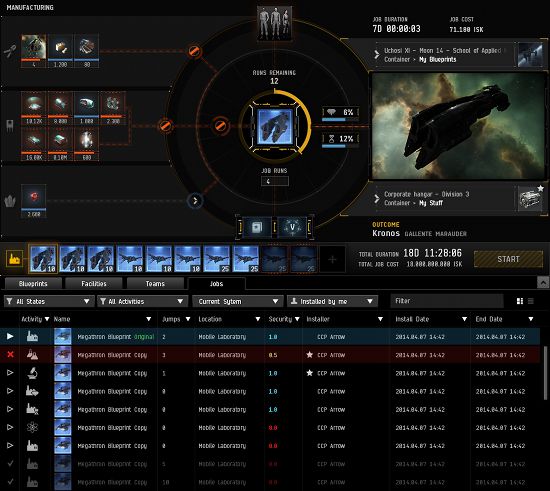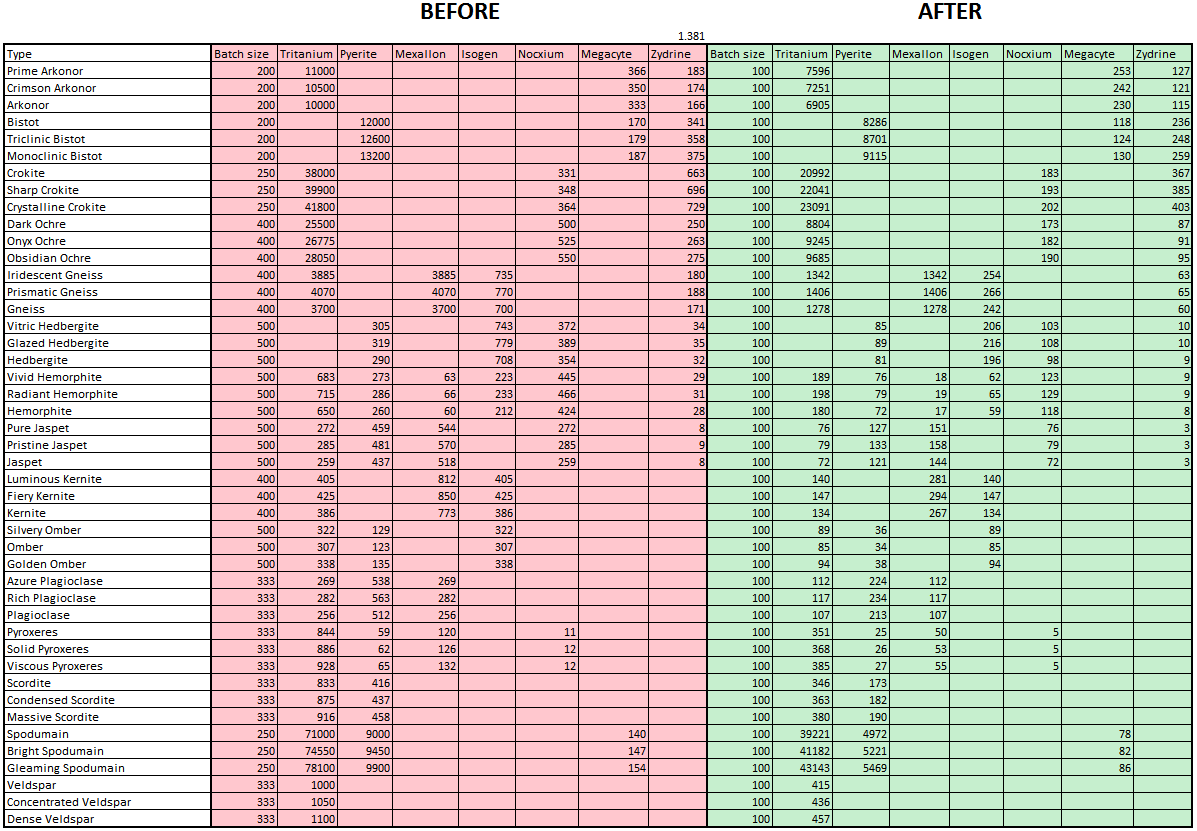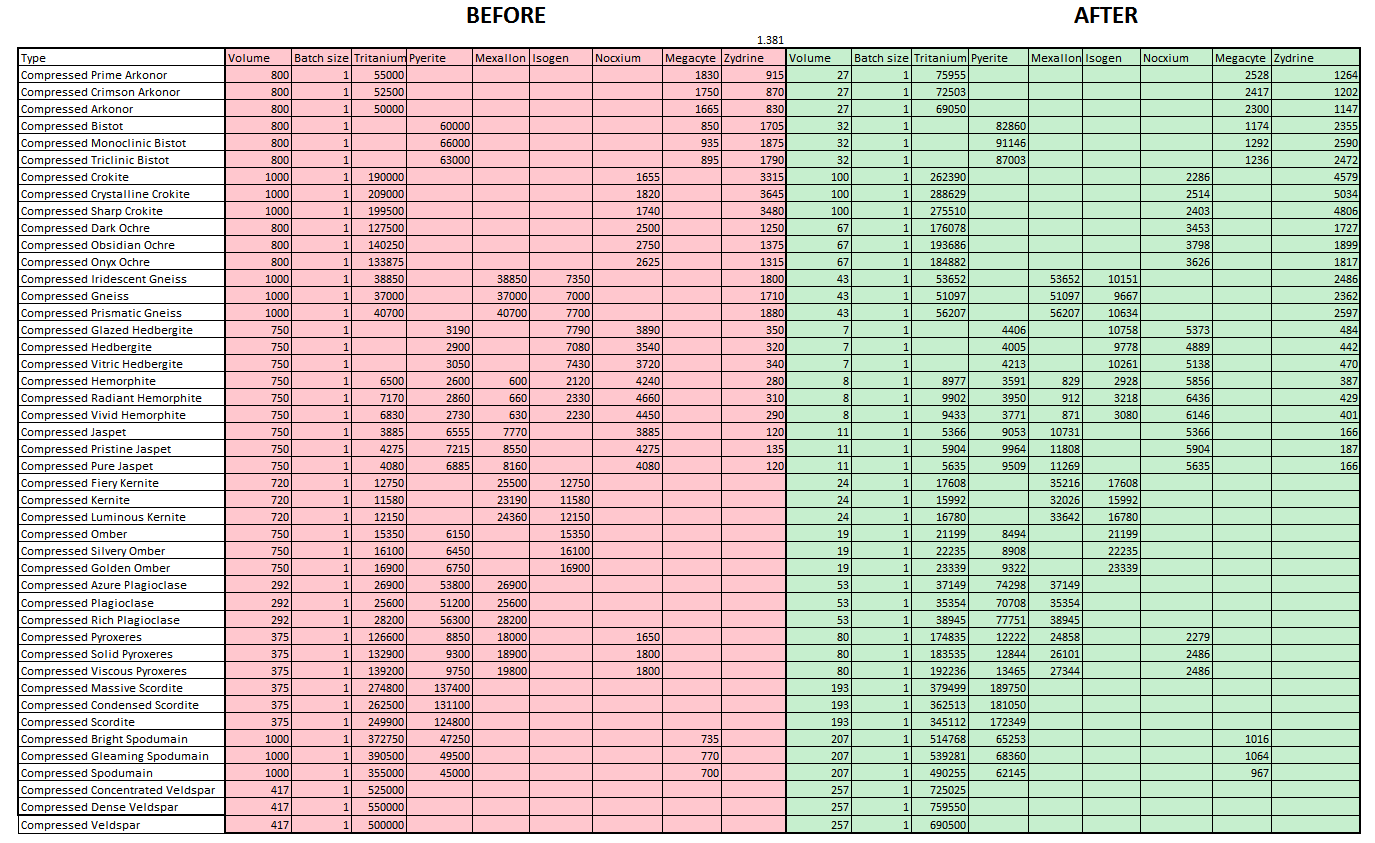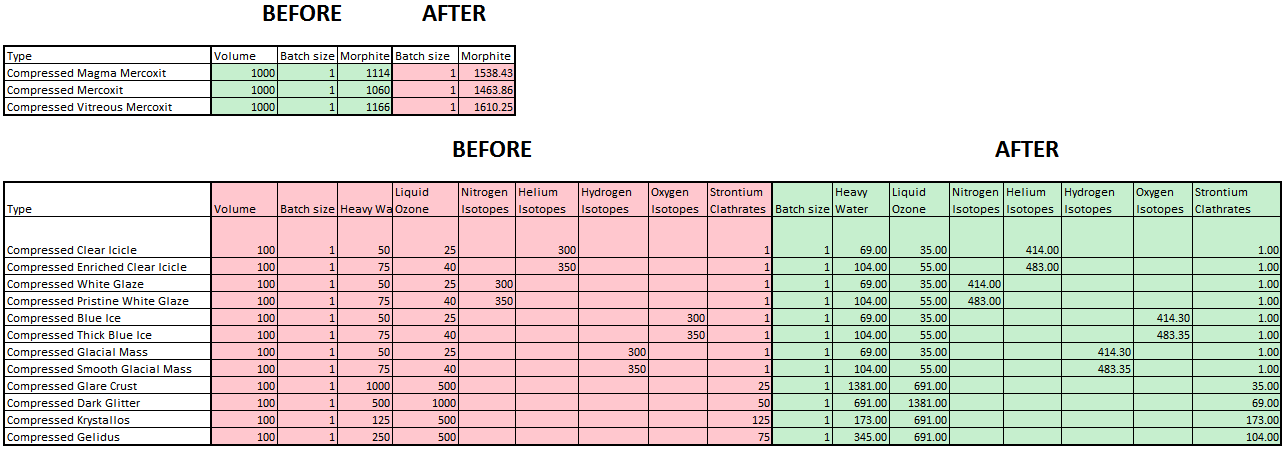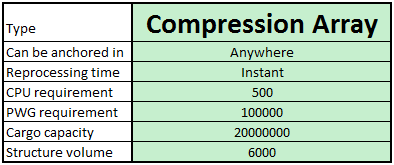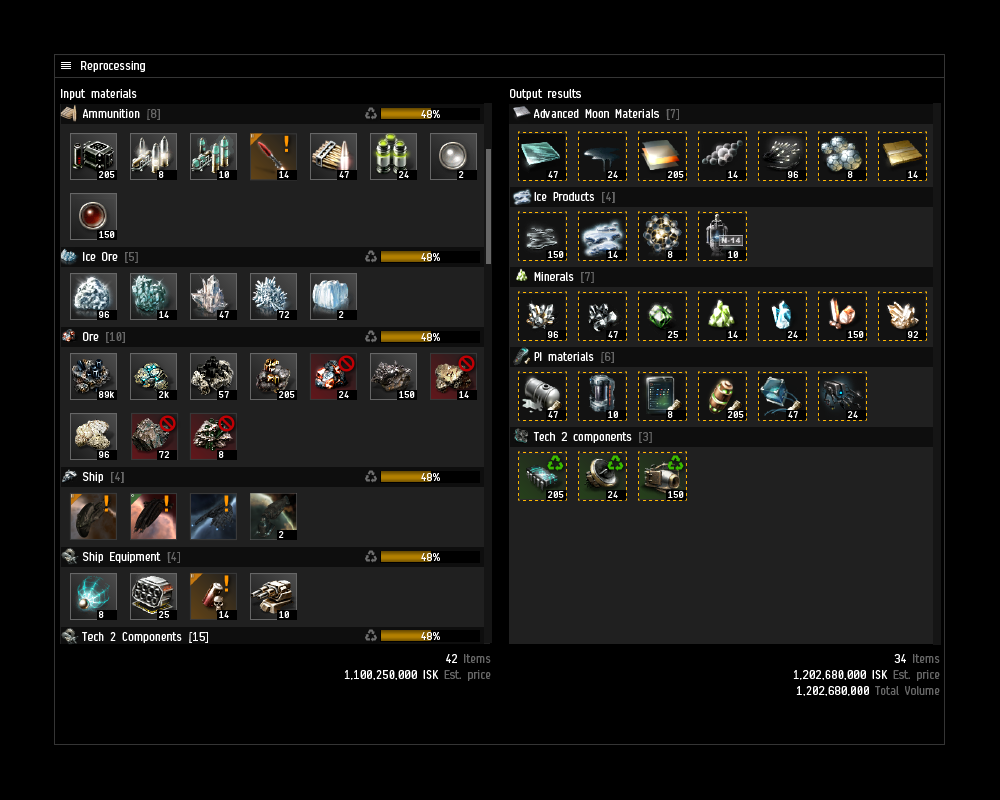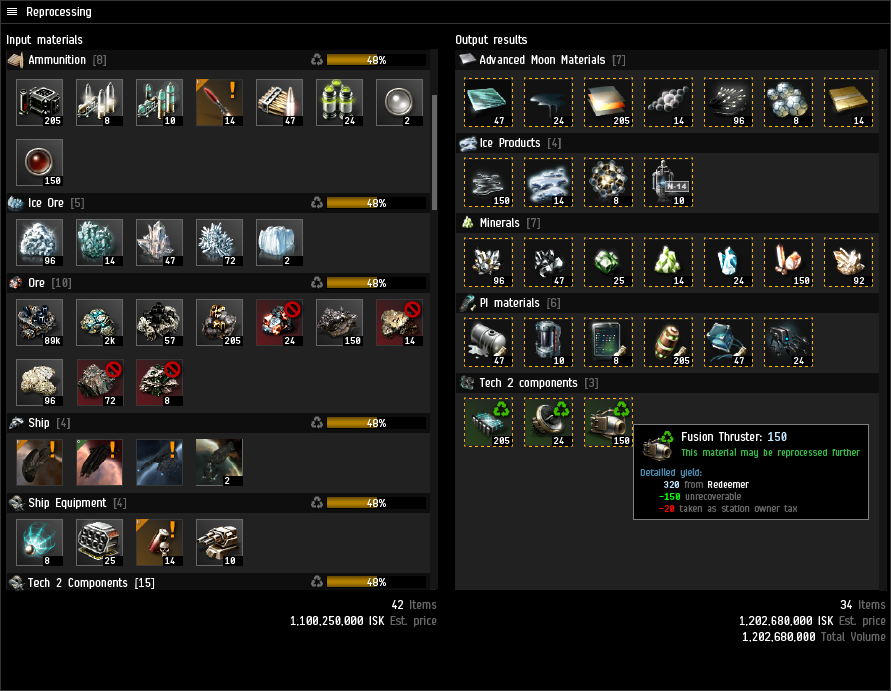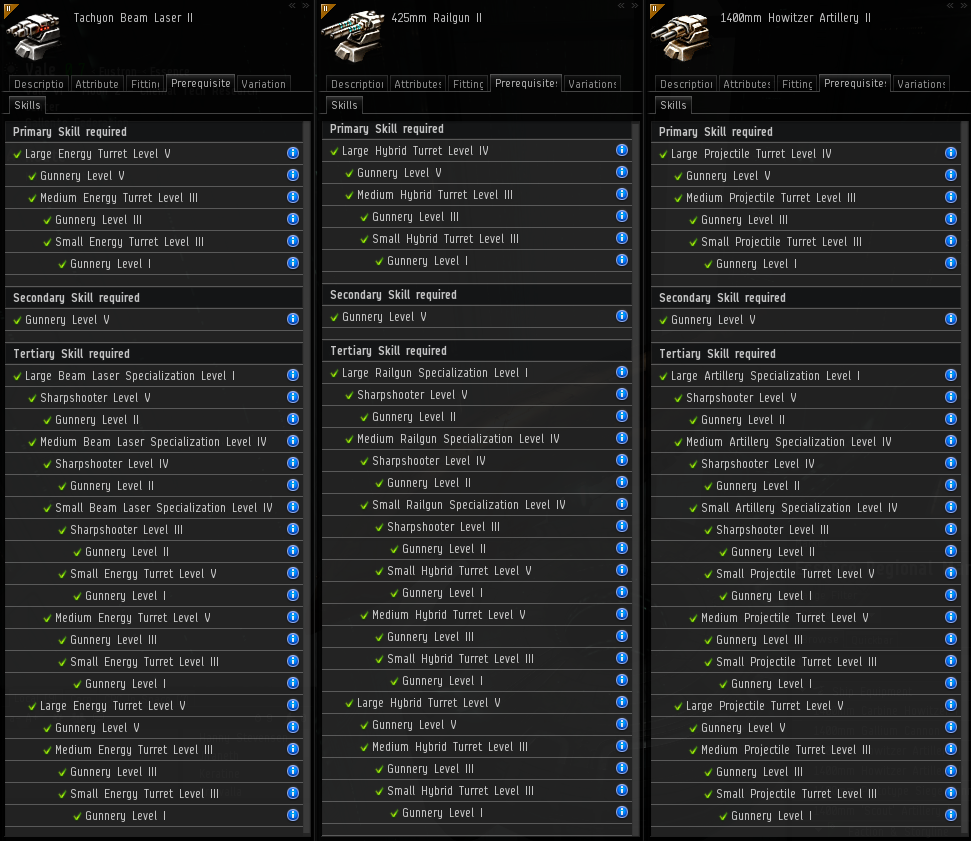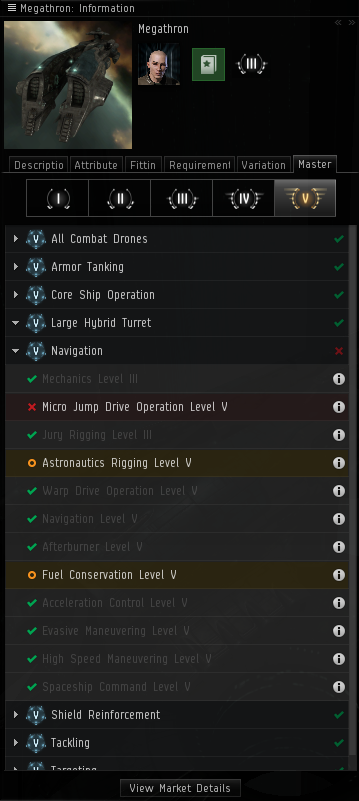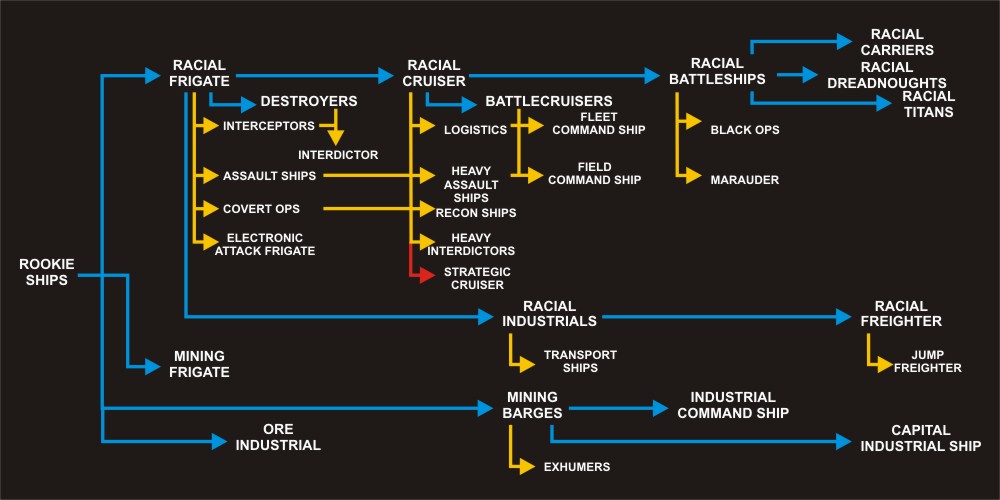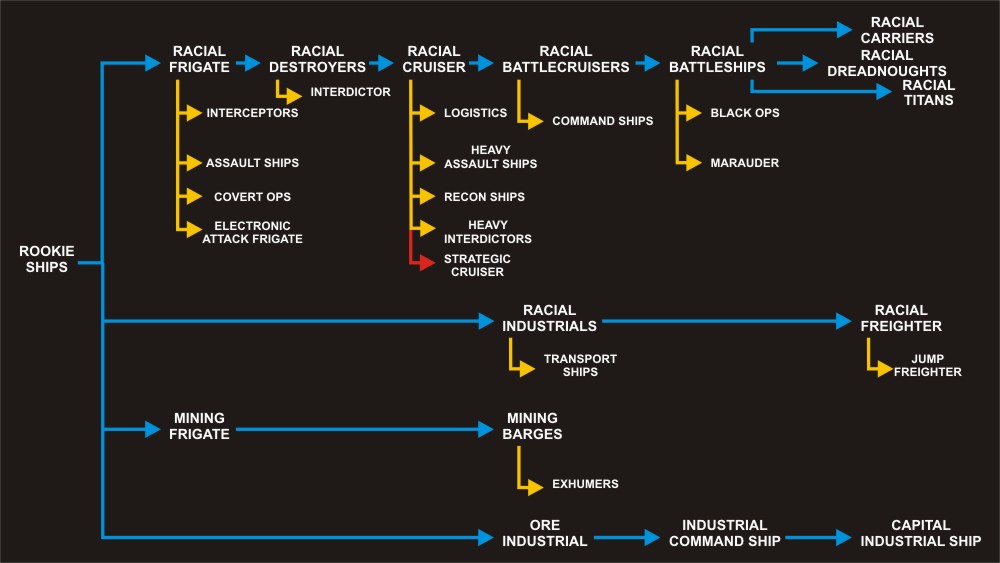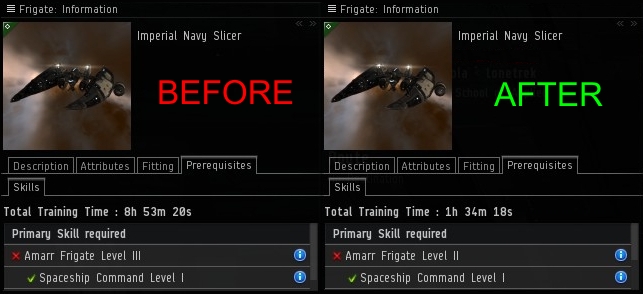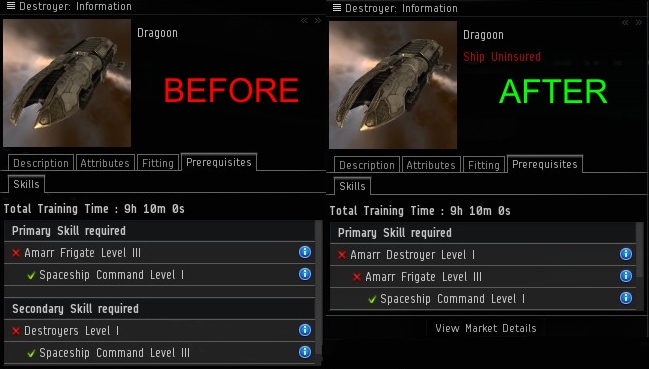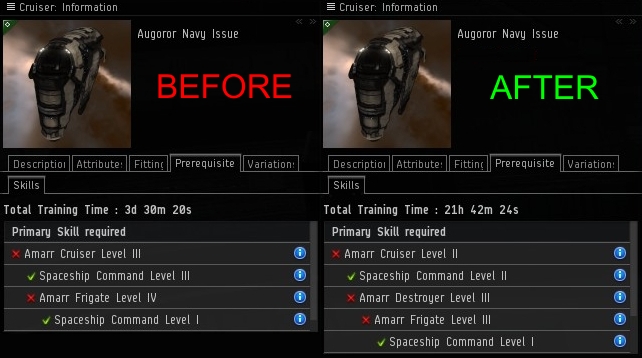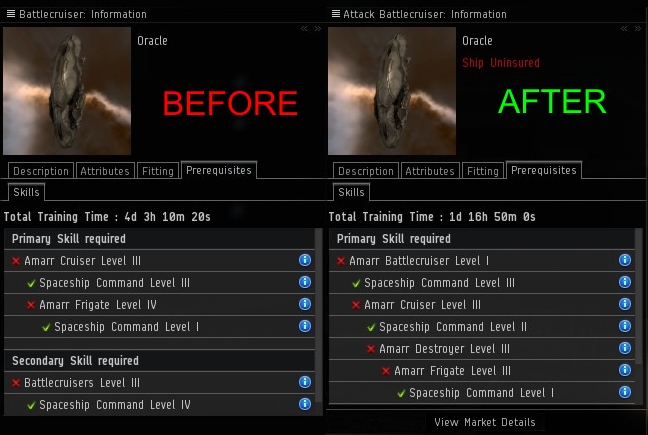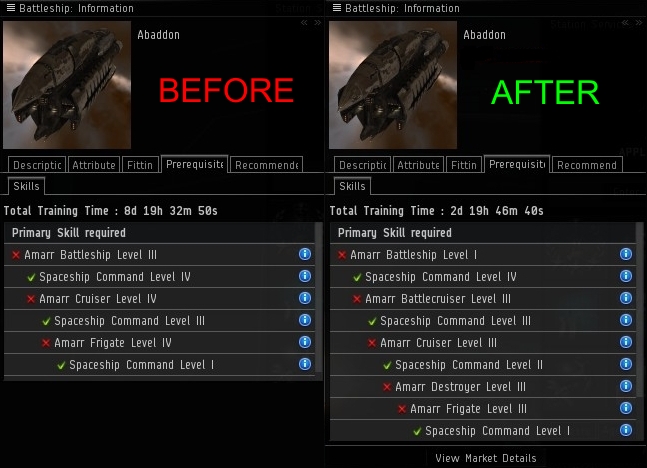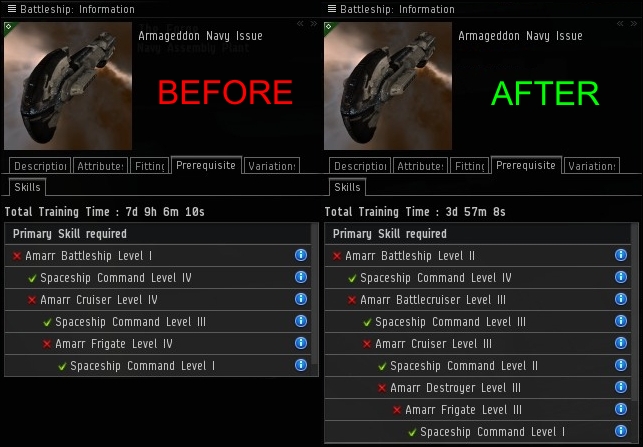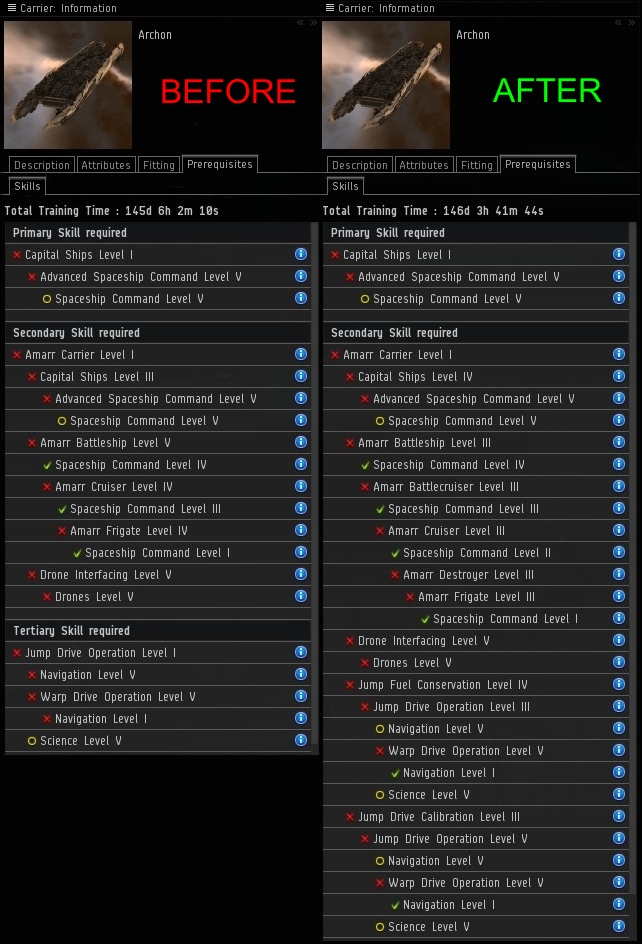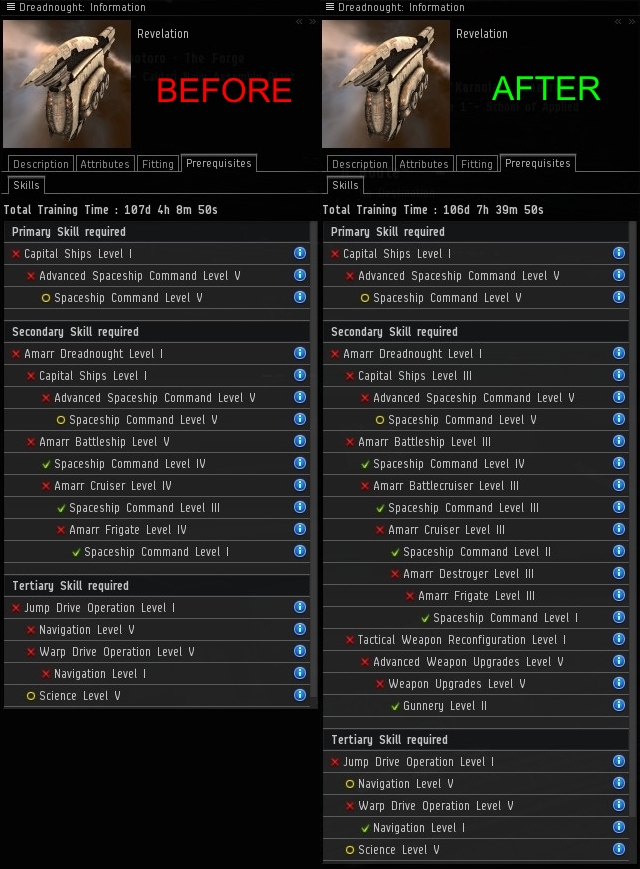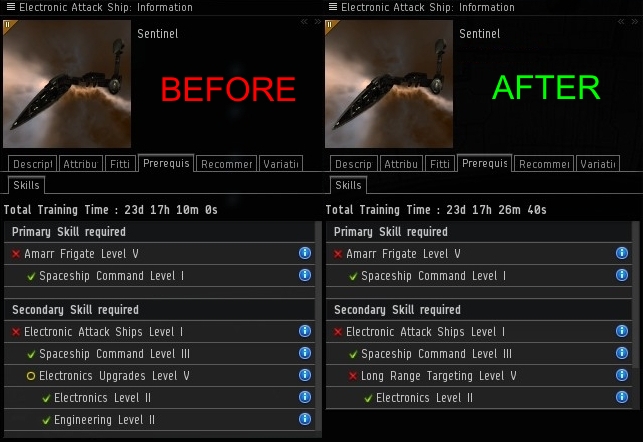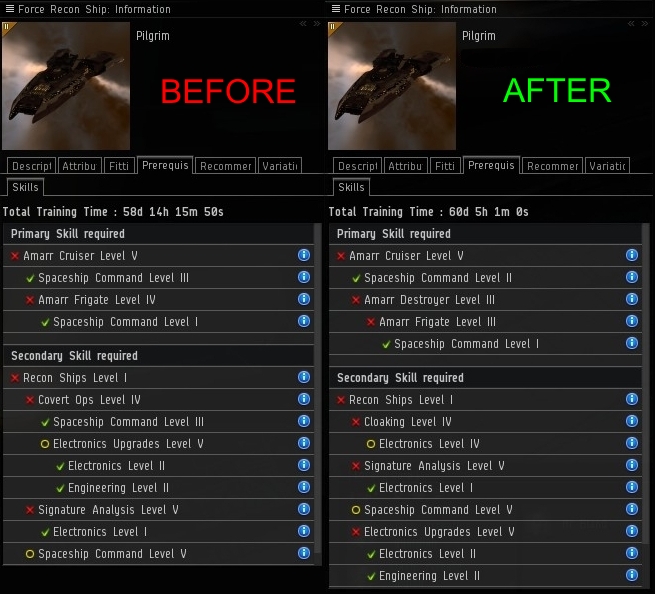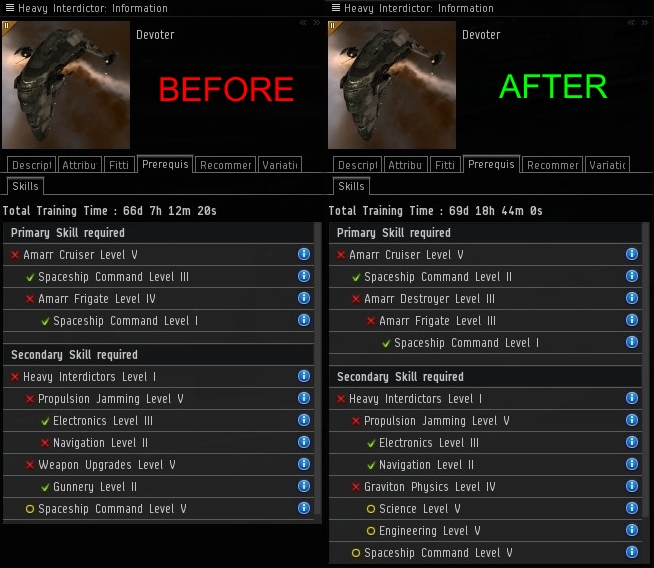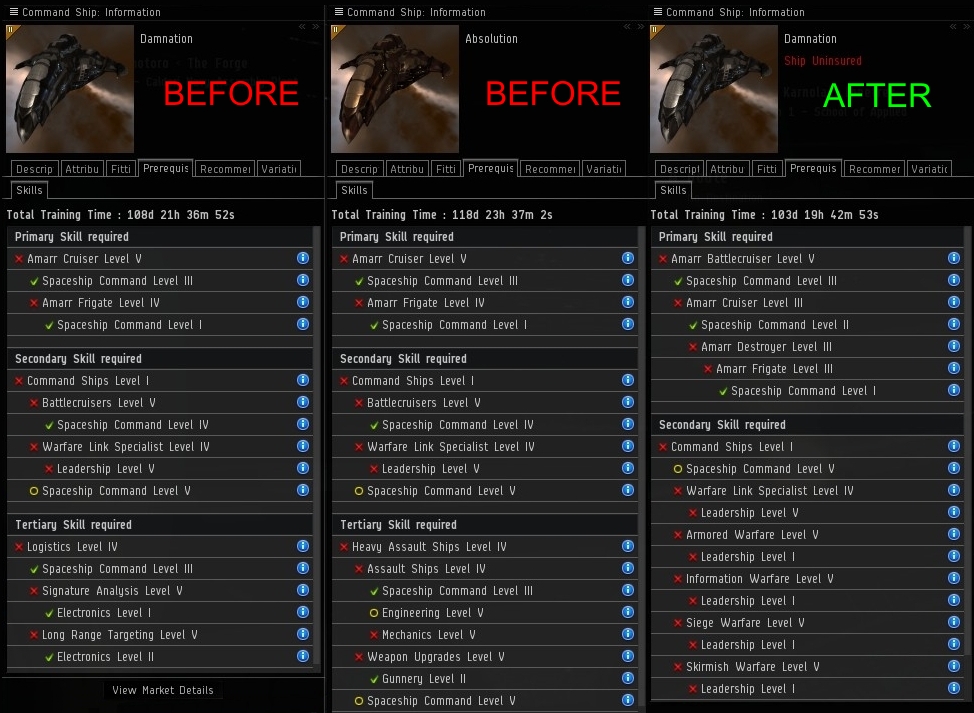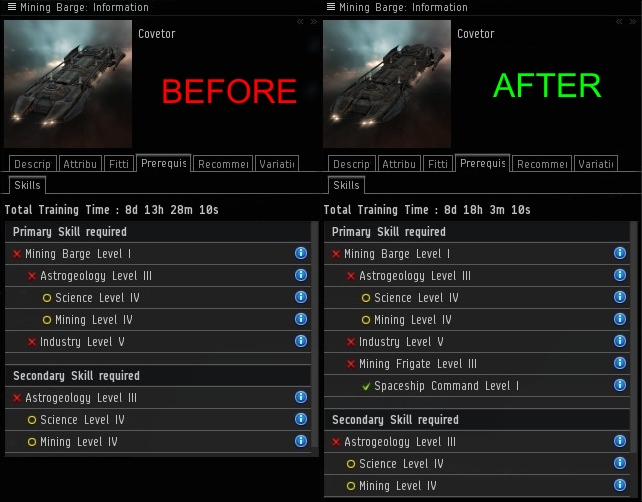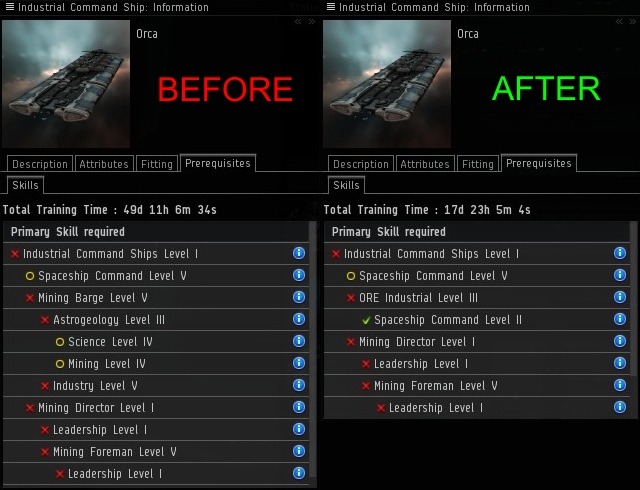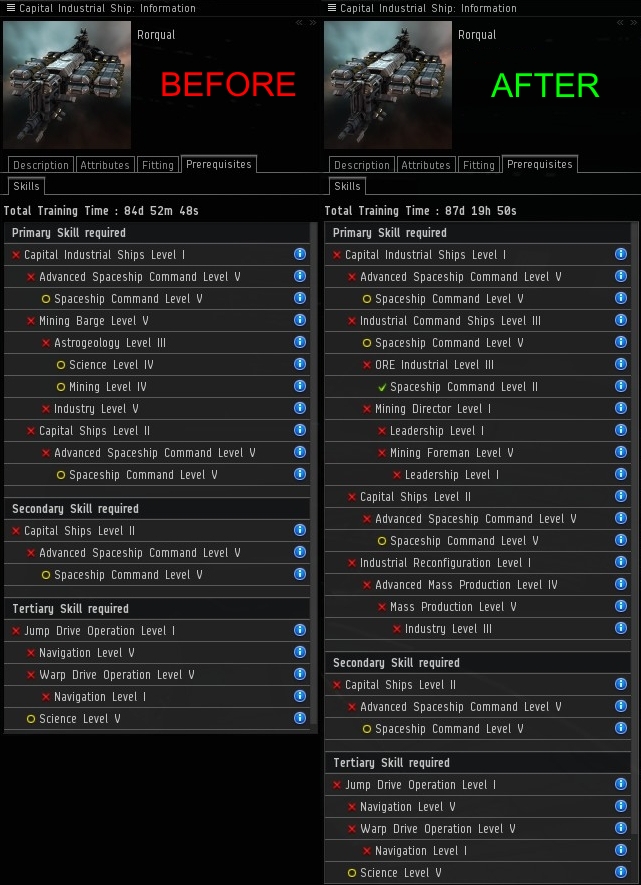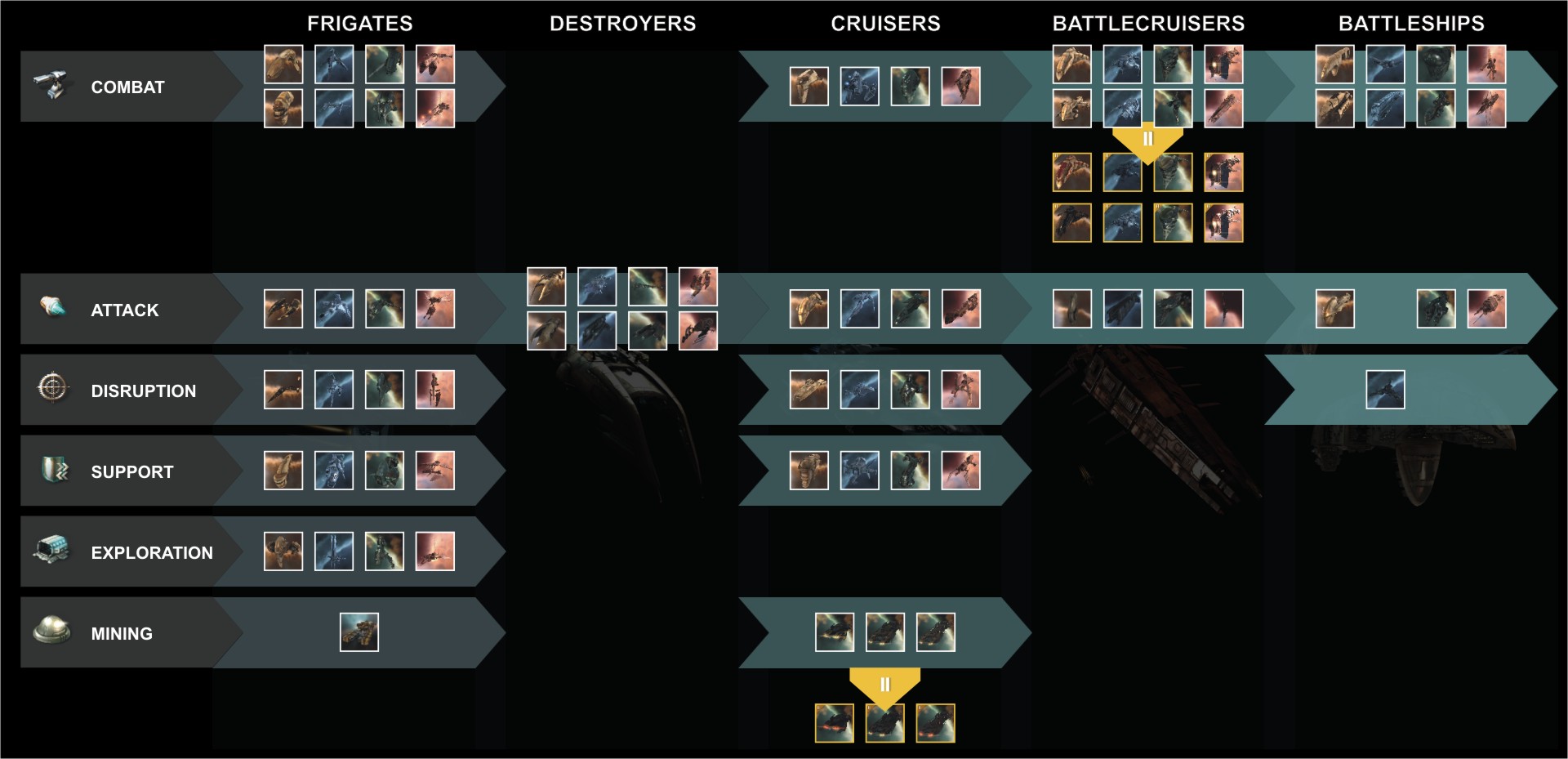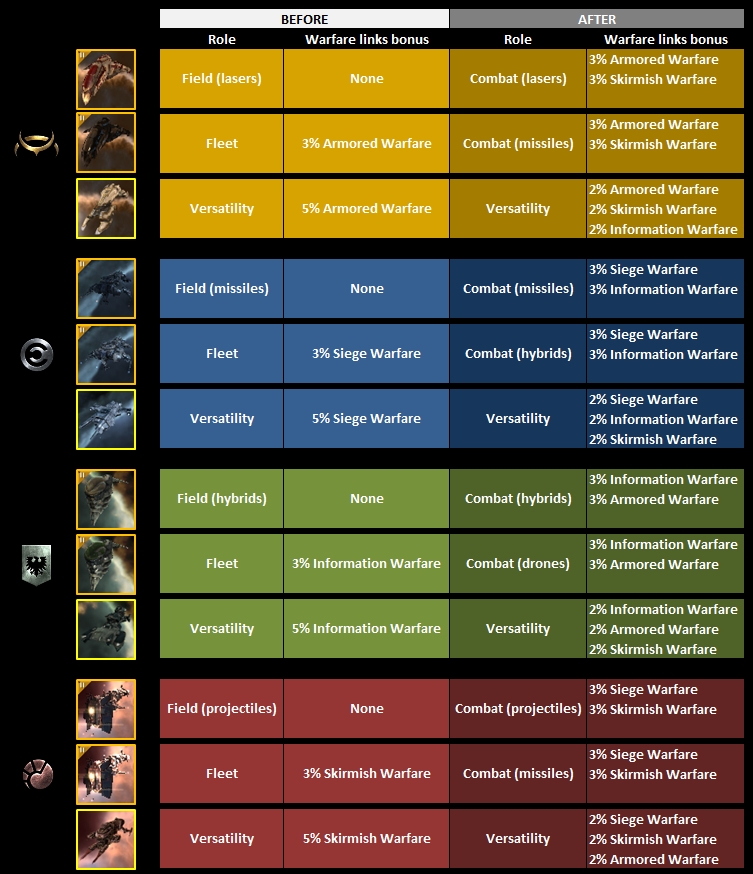Hello space ladies and gentlemen.
While you are all enjoying the new content available in Kronos, we would like to draw your attention to what’s coming up in Crius, our next release. This blog is specifically about tweaks and changes related to player-owned starbases, and while some of the information you’ll see here may previously have been available in various other blogs and forum threads, we figured you could use a central place to read it.
Reprocessing Arrays
As mentioned in our “reprocess all the things” blog, we are revamping Starbase Reprocessing Arrays for Crius. Those will now provide much better reprocessing abilities. Below are their exact attributes.
Let’s go into a little more detail on how they are going to work:
- Player reprocessing skills will be taken into account
- Reprocessing time is instant. No more waiting one hour or even 10 seconds for the outcome minerals
- Ore, ices and gas clouds may now be mixed together at the same time inside the structures – but modules cannot be moved inside the Reprocessing Arrays.
- Reprocessing is done via a simple right-click > reprocess option, which of course can be used on multiple ores at once.
- The Intensive Reprocessing Array may only be used in low-security solar systems and below. The standard Reprocessing Array, meanwhile, may be used everywhere, including 1.0 security systems.
Compression Arrays
Firstly we want to mention that we have further simplified how compression is generally going to work:
- Instead of requiring various amounts of ore to compress as expressed here, compression now requires 100 units of the base ore to deliver one unit of compressed variation.
- Volumes on compressed ores have been tweaked to preserve the same ratios as mentioned in our “reprocess all the things” blog, so the ratios shouldn’t change.
- Compression blueprints are being removed and properly reimbursed.
Example: I have 100 units of Veldspar in the Compression Array with a total volume of 10m3. After compressing them I will receive 1 unit of Compressed Veldspar with a volume of 0.15m3 (this may displayed as 0.2 in the client due to how rounding works).
Secondly, we are introducing a Starbase Compression Array. With perfect reprocessing rates being no longer achievable, this structure becomes quite important to faciliting the movement of ore. Here are the attributes.
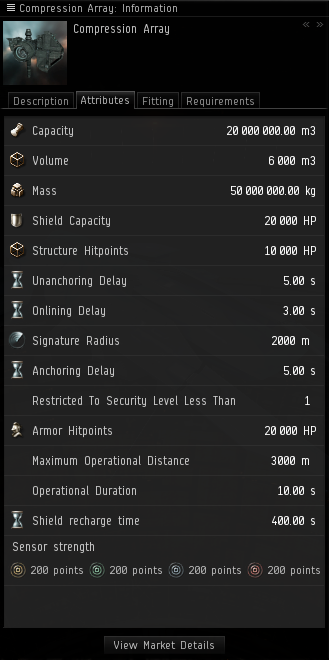
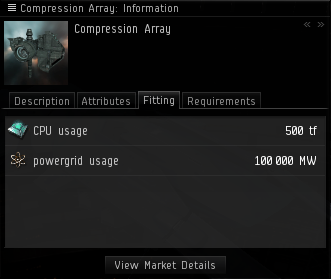
Compression works in a similar way to reprocessing:
- It’s instant with no cooldown
- Ores and ices of different types may be compressed at the same time
- Compression is done via right-click and may be used on multiple selected items at once.
- Ore amounts don’t need to perfectly fit the compression ratios. Any left-overs will automatically be saved
Removal of slots for stations and starbases, to be replaced with tax scaling
As explained in “the Price of Change”, manufacturing and science slots are going away, to be replaced with a cost scaling system. While Starbases will be subject to the same global formula, use of them won't suffer taxation as NPC stations do.
Remote usage station changes
Another drastic change is that blueprints safely stored in a regular station can no longer be used for jobs in Starbase structures. Players will still be able to remotely start Starbase jobs from several solar systems away, but the blueprints will now have to be physically available in the structure for it to properly start.
Structure cost scaling
Removing slots from industry jobs discourage players from stacking more than one Starbase structure of the same type at a Control Tower. To counteract this point, we are going to give specific bonuses when Starbase structures of the same type are stacked together at the same control tower.
This bonus is going to be a flat reduction on the whole job cost price, whose amount and total bonus varies depending on the Starbase structure itself.
|
Structure Type |
Cost reduction per structure |
Max bonus per structure |
|
Medium Ship Assembly, Advanced Medium Ship Assembly, Subsystem Assembly |
2% |
26% |
|
Large Ship Assembly, Advanced Large Ship Assembly, Capital Ship Assembly |
3% |
21% |
|
Design Laboratory, Experimental Laboratory, Hyasyoda Research Laboratory, Research Laboratory |
1.5% |
22.5% |
|
Drug Lab, Ammunition Assembly, Drone Assembly, Component Assembly, Equipment Assembly, Rapid Equipment Assembly |
0.5% |
25% |
|
Supercapital Ship Assembly |
5% |
15% |
|
Advanced Small Ship Assembly, Small Ship Assembly |
1% |
27% |
In practice, this means that stacking 13 Medium Ship Assembly, Advanced Medium Assembly or Subsystem Assembly Arrays will reduce the total cost to start a manufacturing job at any of those structures by 26%. Those bonuses are not system wide, which means that structures at two different locations inside the same solar system will not stack together.
Restrictions on starbase anchoring removed
Control Towers will no longer require faction standings to be anchored in high-security space. Moreover, Control Towers will now be anchorable in previously restricted solar systems like 0.8 and above.
Timed restriction to anchor Control Towers
Newly formed corporations will need to wait 7 days before being able to anchor Starbases. This is to inhibit players from immediately moving Starbase assets to another corporation if under a war declaration.
Improving Mobile Laboratories
Based on this forum thread:
- Mobile Laboratory has been renamed Research Laboratory.
- Advanced Mobile Laboratory has been renamed Design Laboratory.
- Hyasyoda Mobile Laboratory has been renamed Hyasyoda Laboratory.
Changes to Research labs:
- Time multiplier for Research ME: 0.7 (was 0.75).
- Time multiplier for Research TE: 0.7 (was 0.75).
Changes to Design labs:
- Time multiplier for copying: 0.6 (was 0.65).
- Time multiplier for invention: 0.5 (was 0.5).
Changes to Hyasyoda labs:
- Time multiplier for Research ME: 0.65 (was 0.75).
- Time multiplier for Research TE: 0.65 (was 0.75).
Improving Assembly Arrays
Based on the same forum thread:
- All assembly arrays receive a 2% material reduction to manufactured products (except for the Drug laboratory, Subsystem System Array, Rapid Equipment Assembly Array and Supercapital Assembly Array). Assembly Arrays will keep their 25% time reduction.
- Advanced Assembly arrays no longer 10% have material waste. They now all have 2% material reduction like their regular counterparts.
- Rapid Equipment Array material waste now is 5% instead of 20%.
- X-Large Assembly Array is being renamed Capital Ship Assembly Array to better reflect what it actually does.
- Capital Assembly Array is being renamed Supercapital Ship Assembly Array for the same reasons.
Assembly Arrays have their cargohold increased to the following amounts:
- Corporate Hangar Arrays: from 1,400,000 m3 to 3,000,000 m3.
- Ammunition Assembly Array: from 150,000 m3 to 1,000,000 m3.
- Component Assembly Array: from 1,000,000 m3 to 1,500,000 m3.
- Drone Assembly Array: from 150,000 m3 to 1,000,000 m3.
- Equipment Assembly Array: from 500,000 m3 to 1,000,000 m3.
- Rapid Equipment Assembly Array: from 500,000 m3 to 1,000,000 m3.
Material discount changes
We are modifying how Material Efficiency (ME) reduction works on materials. Instead of being applied on individual runs, they will now apply to a whole job. That means that manufacturing a large batch of items will still give some reduction on Assembly Arrays instead of being simply negated.
Some rules:
- We will be rounding up to the next significant digit, which means that 14.4 Tritanium required to manufacture 10x cheap-quality holoreels will actually be rounded to 15.
- Whole and single items will not be affected by this calculation. This is most relevant for Tech I items required to manufacture Tech II variations. For example, building 10 Paladins will not require 9 Apocalypse if you have a 10% ME.
Thukker Component Assembly Array
As we mentioned some time ago, we are also going to introduce a new type of Component Assembly Array to help low-security Capital ship builders to compete with the reprocessing changes.
This structure will give 25% reduction in manufacturing time, 10% reduction in manufacturing required materials and may only be anchored in low-security solar systems. It may only be used to build Capital Construction Components and Advanced Capital Construction Components.
Skill changes:
We are changing the Starbase Defense Management skill to only require Anchoring at 4 instead of 5, in order to ease entry of access into Starbase manual control.
The Supply Chain Management and Scientific Networking skills are also receiving some small changes. Currently you need level 1 to be able to either start Manufacturing or Science jobs in the solar system the blueprint is in, which each subsequent level increasing starting distance to 5 jumps, with level 5 giving you full regional control. We are modifiying those so that starting local jobs in the same solar system the blueprint is in doesn't require any skill, while each level of Supply Chain Management and Scientific Networking increase job starting distance by 5 jumps, up to a total distance of 25 jumps. This reduces dependency on region boundaries which may actually be closer than 25 jumps in some cases.
Removal of Starbase Assembly Line settings:
As mentioned in this thread, since blueprints cannot be remotely using Starbase structures, the whole appeal of this functionality is greatly reduced. As such, we are removing it to reduce confusion as a whole – this will be added back when we get to fully revamp Starbases in the future.
The end
We hope this will shed some light on the various changes coming to Starbases in the Crius release on July 22nd and help you make the right industrial decisions before its goes live.
